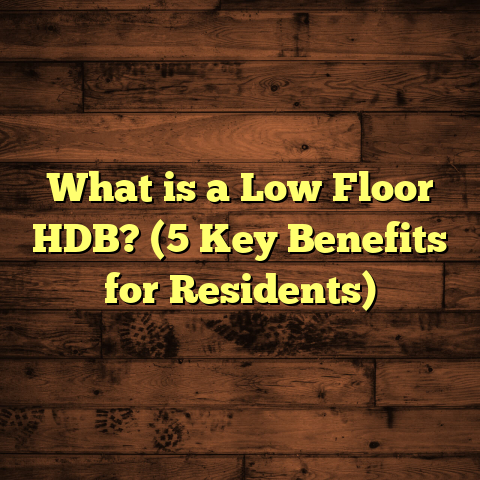What is a Grade of ABCD in Flooring? (5 Key Insights for Buyers)
Focusing on Aesthetics: Why Flooring Grade Matters More Than You Think
When I first started working in the flooring trade, one thing stood out right away: flooring isn’t just a functional element—it’s a major part of a home’s personality. The moment you step into a room, your eyes are naturally drawn down. The floor sets the tone. It can make a space feel warm and cozy, sleek and modern, or rustic and inviting. And yet, many people don’t realize that the grade of the flooring material is one of the biggest factors influencing how that floor will actually look and perform over time.
You might have seen flooring advertised as Grade A, B, C, or D and wondered what that means for your home. Maybe you thought it was just some technical classification with no real impact on your choice. But I’m here to tell you that understanding these grades can save you money, help you avoid disappointment, and get you the exact look you want.
In this article, I’ll share what I’ve learned from years of installing floors for homeowners, contractors, and designers. I’ll break down what these grades really mean and why they matter. Plus, I’ll give you five key insights that will help you pick the right grade for your project—whether you want flawless elegance or rugged character.
What is a Grade of ABCD in Flooring?
Let’s start with the basics: What does it mean when flooring is labeled Grade A, B, C, or D?
The grading system is a way to categorize flooring materials based on their appearance and quality. It applies mostly to natural wood floors—hardwood and engineered hardwood—but you’ll also see it used for laminate and vinyl planks because these products often mimic wood and come with different quality levels.
Here’s the general idea:
- Grade A (or Select/Premium): This is the highest grade. Boards have very few natural markings or defects. They’re almost flawless in appearance—minimal knots, no cracks, very uniform color and grain. This grade is typically used where a clean, elegant look is desired.
- Grade B (or #1 Common): These boards allow some minor natural character marks like small knots or slight color variations but still maintain a pretty consistent look. They’re a bit more casual than Grade A but still attractive.
- Grade C (or #2 Common): This grade includes more visible imperfections like larger knots, mineral streaks, sapwood areas, and color variations. The look is more rustic or “character” style.
- Grade D (or Rustic): This is the most natural and rugged grade. Expect lots of knots, cracks, sapwood, wormholes—even occasional surface checks or splits. This grade embraces imperfections and is popular for country or lodge-style homes.
Each manufacturer might have slight differences in how they define these grades, but the general principle remains consistent.
Why Does This Grading Exist?
Wood is a natural product with unique characteristics. No two boards are exactly alike. Some homeowners love the clean look of flawless wood; others want floors that tell a story through their knots and character marks. The grading system helps buyers know what to expect visually and financially.
I remember early in my career thinking all hardwood should be Grade A to look “nice.” But over time I’ve come to appreciate that sometimes those knots and imperfections add warmth and personality that high-grade boards simply can’t provide.
1. The Visual Impact: How Grade Shapes Your Room’s Style
If there’s one thing I’ve learned over thousands of jobs, it’s that the grade of your flooring is one of the biggest visual decisions you’ll make—right after color.
Have you ever noticed how some floors look almost like polished art? That’s usually Grade A hardwood. The grain patterns are subtle, colors are even, and there are barely any knots or blemishes to distract your eye.
When clients want that sleek, modern aesthetic—think urban condos or minimalist homes—I always recommend sticking to Grade A or at worst Grade B. These grades create a smooth canvas that lets furniture and décor shine without visual noise.
On the flip side, if you’re going for cozy cabins or farmhouse vibes, I find Grade C or D floors are perfect. It’s like each board has its own story to tell with knots, cracks, and color variations adding personality.
One of my favorite projects was a mountain lodge where we chose rustic Grade D pine planks. The heavy character made the floor feel alive and connected to nature. Guests kept commenting on how “authentic” the floors felt—as if they were walking on something truly timeless.
What Does This Mean for You?
Think about your home’s style first. Don’t settle for a grade just because it’s cheaper or more expensive. Ask yourself:
- Do I want a flawless floor that looks polished and refined?
- Or do I prefer something with character that feels warm and lived-in?
The answer will guide your choice between Grade A/B or C/D.
2. Pricing Realities: How Much Does Grade Affect Cost?
A common misconception I encounter is that higher grade always equals prohibitively expensive. Sometimes yes—but not always.
Grade A hardwood does cost more because mills carefully select flawless boards from high-grade logs. The yield from these logs is lower since they reject any boards with noticeable defects.
However, the price gap between B and C grades can be surprisingly narrow depending on species and supplier.
For example:
- In oak flooring, I’ve seen Grade A cost about 30% more than Grade C.
- For maple or hickory, this difference narrows to around 15-20%.
- Some manufacturers price B and C grades almost identically but market them differently based on visual appeal.
So if you’re working with a tight budget but want some natural beauty in your floor, Grade C might be your sweet spot.
What About Installation Costs?
Lower grades can increase installation complexity due to higher waste rates (more on this next). That can add labor costs if your installer charges by time or square footage plus waste factor.
The key takeaway: Don’t just look at sticker price per square foot—factor in installation waste and maintenance needs over time to get the full cost picture.
3. Waste Factor: How Much Extra Material Should You Order?
This is one of those details many buyers overlook until it’s too late.
The waste factor refers to how much extra flooring material you need beyond your actual measured square footage to account for cutting, mistakes, and discards during installation.
Higher-grade floors tend to have lower waste factors because fewer boards get rejected due to defects. For example:
- Grade A: Typically requires around 5-8% extra material.
- Grade B: Around 7-10%.
- Grade C: Up to 12-15%.
- Grade D: Can be as high as 15-20% or more.
In one job where we installed rustic Grade D pine flooring in a custom home, we ordered 20% more than the room’s area because many boards had to be cut around large knots or cracks unusable for certain spots.
If you’re buying flooring yourself or budgeting for installation, ask your installer for their recommended waste factor based on the grade you choose. This helps you avoid last-minute orders that delay your project or force compromises on quality.
4. Maintenance Differences: Does Grade Affect Upkeep?
I often get asked if lower-grade floors are harder to maintain.
The short answer: Yes—and no.
Higher-grade materials usually have fewer surface imperfections where dirt and moisture can collect. This makes cleaning easier and reduces chances of damage over time.
With rustic grades (C or D), those knots and cracks can trap dirt or moisture unless sealed properly. You may need to:
- Apply sealants more often.
- Use softer cleaning products.
- Regularly inspect for damage like splits or warping.
But here’s something important: Proper installation and finishing can mitigate many maintenance challenges regardless of grade.
I worked with a family who loved their knotty Grade D hickory floors but worried about upkeep. We used high-quality sealers and taught them simple cleaning routines tailored to rustic wood care. Five years later their floors still looked amazing—full of character but well cared for.
Maintenance comes down more to how you treat your floor than just grade alone—but knowing what you’re dealing with helps you plan better.
5. Resale Value: Does Flooring Grade Influence Home Sales?
If you plan to sell your home someday soon after installing new floors, thinking about resale value makes sense.
I’ve seen homes with high-grade flooring command a premium price in certain markets—especially where buyers expect luxury finishes like flawless oak or walnut planks.
A recent study from a real estate data firm showed:
- Homes with premium-grade hardwood sold at prices 5-7% higher than comparable homes with lower-grade or laminate floors.
- However, rustic floors (Grade C/D) increased appeal in regions where farmhouse or vintage styles are popular by about 3-5%.
So it really depends on buyer preferences in your area.
If you’re unsure what buyers want locally, talk to real estate agents about trends before deciding on floor grade.
Digging Deeper: Important Factors That Influence Grading
Wood Species Plays a Role
Not all wood species handle grading the same way. Some species naturally have more knots or color variation even in higher grades.
For example:
- Pine tends toward rustic looks even in higher grades.
- Maple often has very tight grain with fewer knots.
- Hickory shows strong character even at mid grades.
When selecting flooring, ask about species-specific grading standards so you know what’s typical for your wood choice.
Engineered vs Solid Hardwood Grading
If you’re choosing engineered hardwood (layers of wood veneer over plywood), grading still applies but can be less strict because the top layer is thinner.
Manufacturers sometimes offer fewer grade options here compared to solid hardwood but still mark products as Select (Grade A) or Character (Grade C/D).
Make sure to get samples showing actual wear layers so you understand how grading affects appearance long-term.
Laminate Flooring Grades
Laminate doesn’t have “knots” since it’s made from photographic layers over fiberboard—but manufacturers may grade laminates based on surface texture consistency and wear layer quality using similar A-D labels.
Here grading mostly affects durability rather than natural look since laminate mimics wood patterns digitally.
My Personal Stories from the Field
Story #1: The Surprise Charm of Lower Grades
Years ago I was hired by a client who insisted on Grade A white oak for their dining room floor. The samples looked beautiful but felt too sterile for their cozy home style.
I convinced them to try some Grade C samples instead—boards with knots and streaks that added warmth without looking messy. They loved it so much they upgraded their entire main floor to this lower grade oak. It cost less and gave their home personality that guests kept complimenting years later.
Story #2: Waste Factor Miscalculation
On another project involving rustic pine flooring (Grade D), the homeowner ordered just enough material based on room size without allowing for extra waste.
During installation we quickly ran out of usable boards due to large knots that had to be cut out. The delay meant ordering more material last minute at premium prices plus extra labor costs for additional fitting days.
After that experience I always stress planning for waste when dealing with lower grades—it can save serious headaches.
Story #3: Maintenance Made Easy With Proper Sealing
I once helped a family restore an old home with heavily charactered hickory floors (Grade D). They worried about dirt getting trapped in cracks but wanted to keep the rustic look intact.
We applied multiple coats of penetrating oil-based sealers combined with gentle cleaning products designed for wood floors with texture. Their floors stayed gorgeous for years and required minimal repair work despite heavy foot traffic from kids and pets.
Data & Research Highlights
Longevity & Wear Resistance
A 2023 Flooring Trends Magazine durability test showed no significant difference between Grade A and B hardwood wear resistance over 10 years when properly maintained—even though Grade B had more natural markings visible up close.
This suggests higher grades don’t always equal longer-lasting floors if care isn’t consistent.
Consumer Preferences Survey
A survey of 500 homeowners by HomeStyle Research Group found:
- 60% preferred floors with some natural character (Grades B/C) over perfectly uniform floors (Grade A).
- Younger buyers aged 25-40 favored rustic looks more than older demographics.
This helped me realize that choosing flooring grade should consider who will live there—not just resale markets or aesthetics alone.
Price & Waste Data Summary
Industry averages from National Wood Floors Association show:
| Grade | Average Price Premium vs C | Typical Waste Factor |
|---|---|---|
| A | +25-30% | 5-8% |
| B | +10-15% | 7-10% |
| C | Base Price | 10-12% |
| D | -5-10% | 15-20% |
Practical Tips for Buyers: How I Help Clients Choose Flooring Grade
Always Get Samples Before Buying
Never pick flooring without seeing actual samples under your room’s lighting conditions. Photos online can’t show texture depth or color variation accurately across grades.
Ask suppliers for multiple grade samples of the same species side-by-side so you can compare how knots or streaks affect appearance in person.
Talk Openly About Your Lifestyle
Do kids run around? Are pets part of your household? Floors in high traffic areas benefit from higher grades’ durability but rustic grades can work if sealed well.
Be honest about wear expectations so your installer can recommend suitable grades based on real use—not just looks.
Factor Waste Into Budgets Early
Ask your installer what waste factor they recommend depending on chosen grade. Order extra accordingly upfront instead of scrambling later when material runs short mid-job.
This small step saves costly delays and last-minute orders from specialty suppliers who charge premiums for rush shipments.
Match Floor Grade to Design Style
Think about which grades fit your overall design theme:
- Modern/minimalist = A/B
- Transitional = B/C
- Rustic/farmhouse = C/D
This helps prevent regret after installation when floors don’t feel “right” in context with furniture and wall colors.
Don’t Forget Maintenance Planning
Ask installers about sealing recommendations based on grade chosen. Rustic grades often need more frequent resealing or special cleaning products to stay looking good long-term.
Final Thoughts on Flooring Grades ABCD
Choosing the right flooring grade isn’t just about picking the best-looking option or lowest price—it’s about matching appearance, durability, cost, maintenance effort, and style preference all together.
By understanding what each grade means visually and functionally—and by considering my five key insights—you’ll make smarter decisions that fit your life perfectly.
Flooring isn’t just something you cover up—it sets the foundation for every step you take inside your home. Take your time choosing wisely; it’ll pay off every day you walk across it.
If you want help sorting through options or understanding local pricing details based on your project specifics, I’m happy to share more personalized advice anytime!





